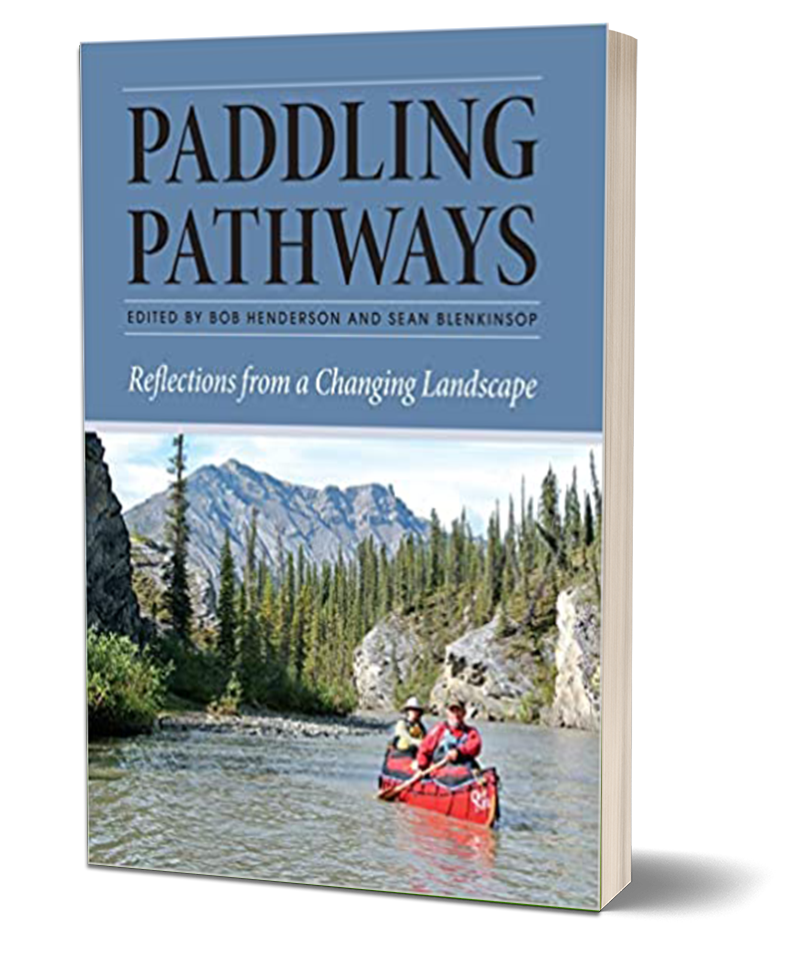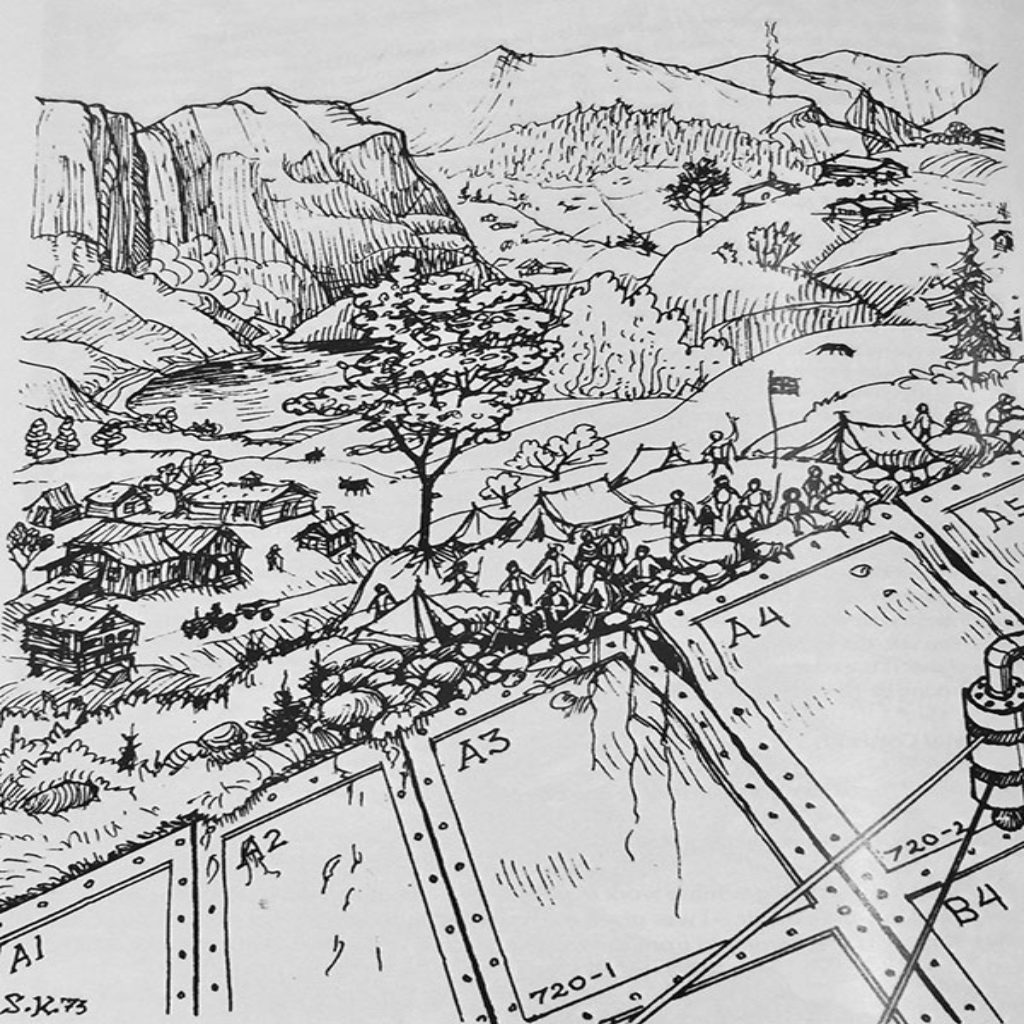Available online and in a bookstore near you!
Paddling Pathways:
Reflections from a Changing Landscape
Bob Henderson | Sean Blenkinsop
May 2022
Foreword by Bruce Cockburn
Includes: Composite Route Map & Favourite Local Paddling Places Map
A collection of 21 essays featuring authentic experiences and perspectives gleaned from paddling throughout Canada. This book aims to entertain, enlighten and challenge readers to shift their perspective on what paddling means to them. The language that we use to tell our stories matters and these honest experiences demonstrate that even the ordinary can be extraordinary.
“In an age of hedonistic adventure-seekers and unrestrained bushcrafters, we finally have an authoritative chronicle of the theoretical adventure, an abstract of exploration in a higher form. Paddling Pathways is a brilliant compendium of Canadian stories from real wilderness aficionados—a must-read for anyone who aspires to apprehend the juxtaposition of soul and nature. Bob Henderson and Sean Blenkinsop have brought together more than just an assemblage of the best outdoor writers; they have gathered wilderness purveyors whose stories hit the very core of the meaning of ‘the journey’ in gallant and self-effacing accounts.”
— Hap Wilson, author, artist, photographer, map-maker, trail builder, wildlands conservationist, and lodge owner. In short: all things canoeing.
“This treasure trove of paddling tales is as rich and diverse as the waterways, ecosystems, and cultures across the land . . . . Paddling Pathways rekindles our relationship with the land, waters, each other and ourselves.”
— Scott McCormack, and Sarah Hrdlicka, Cape LaHave Adventures
“. . . the stories in this book explore the finer nuances as to what draws us to paddling, and what we take away from our time on the water.”
— Michelle McShane, Executive Director, Paddle Canada

Zabe MacEachren reading fellow authors’ stories in Paddling Pathways

Sigmund Kvaløy Setreng (2015)
Ecophilosophy Fragments: Writings – Drawings – Testimonies
ELVETID (River Time) is an exquisite book in Norwegian honouring the life and work (meaningful work) in text and drawings of Sigmund Kvaløy Setreng. We (Bob Henderson and Aage Jensen) knew of this pending publication following the death of Sigmund, May 27, 2014. We had discussed collecting together Sigmund’s body of work. We would add to this, testimonies from an array of Sigmund’s friends and colleagues; and we are happy to consider ourselves part of that friendship world – Ecophilosophy Fragments is the result.
‘The socio-ecological crisis of our time is throwing us through something completely unprecedented; it is global, and it is deeper and more uprooting than most people – even among the greens – have imagination to grasp. A few generalist studies give us hints to that effect, specialists of whom there is an overabundance in the world, mislead instead of enlightening here.
We need very much to develop a viable new paradigm, a new world picture, or rather a new mode of perceiving, thinking, and living, maybe a new myth. The need is for something we can base our action on, something that will give us a collective strength at least equal to the security with which our opponent, an Industrial Growth Society, operates.’

More Trails, More Tales (2014)
Inspired by and drawing on Canadian exploration, Bob Henderson’s More Trails, More Tales, strikes a balance with travel literature, history, geography, anthropology, literature, and philosophy. It will delight outdoor enthusiasts, serious naturalists, educators, and armchair travellers alike. It is essentially a storytelling book, highlighting Canadian stories and examining different aspects of heritage travel in Canada.
This book is about following blazed trails back in time, mostly to gain that special wisdom of feeling connected to and energized by places, stories, people, and practices. And why is feeling connected to and energized by old ways, old times, and old-timers valuable? Well, as Canadian ecologist John Livingston used to say about ecology: it is possible to feel “part of a greater enterprise of life.” Or, as educator Peter Higgins has asked, “Is it better to be a small person in a large landscape, or a large person in a small landscape?” Knowing the stories of past travellers and dwellers helps us put ourselves in perspective and find our place in the place, so to speak. As we gain perspective this way, we gain an understanding of this greater enterprise. We enter a larger landscape as a richer self. It is a worthy goal, and one central to this story. The working premise here is that it is very good to be a small person in a large landscape. Thanks for that, Pete.
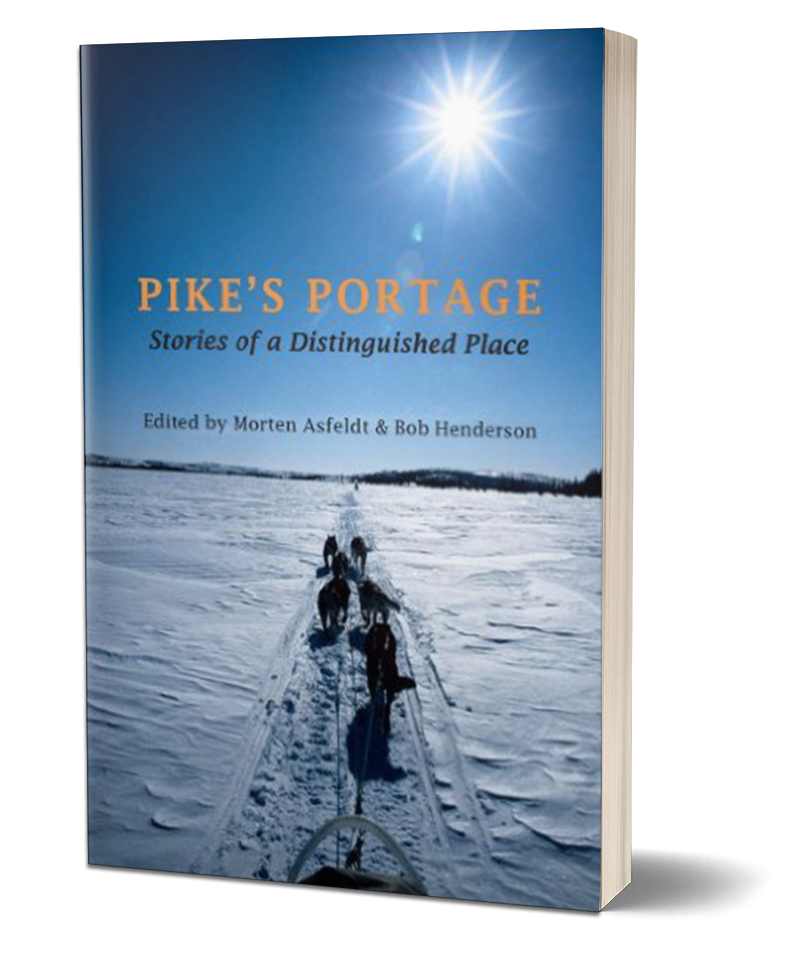
Pike’s Portage (2010)
Bob Henderson & Morten Asfeldt
“Pike’s Portage plays a very special role in the landscape of Canada’s Far North and its human history. It is both an ancient gateway and the funnel for early travel from the boreal forest of the Mackenzie River watershed to the vast open spaces of the subarctic taiga, better known as the “Barren Lands” of Canada.
“This book is a rich and wonderful comopendium of stories about this area and the early white explorers, the Dene guides, the adventurers, the trappers, the misguided wanderers (like John Hornby) as well as the modern-day canoeists who passed this way. For the reader, it provides an absorbing escape into the past and the endless solitude of the northern wilderness.” – George Luste, wilderness canoeist, physics professor (University of Toronto), and founder-organizer of the annual Wilderness Canoeing Symposium.
“So why do people come to this place, this Pike’s Portage in particular? The call of landscape is potent and these word portraits collected here offer up some of those who have answered. Both subject and writer reveal the complexities of human perception. Some are called by the profound power of inherited cultural meaning, while a huge dose of imagination draws others from far away. These worlds seldom truly meet, even in a place as busy as this, but whether it is homeland or wilderness, human histories are recorded in footprints, place names, and memory, and here we stand with a magnificent view, marvelling at it all.” – Susan Irving, Curatorial Assistant, Prince of Wales Northern Heritage Centre, Yellowknife, NWT
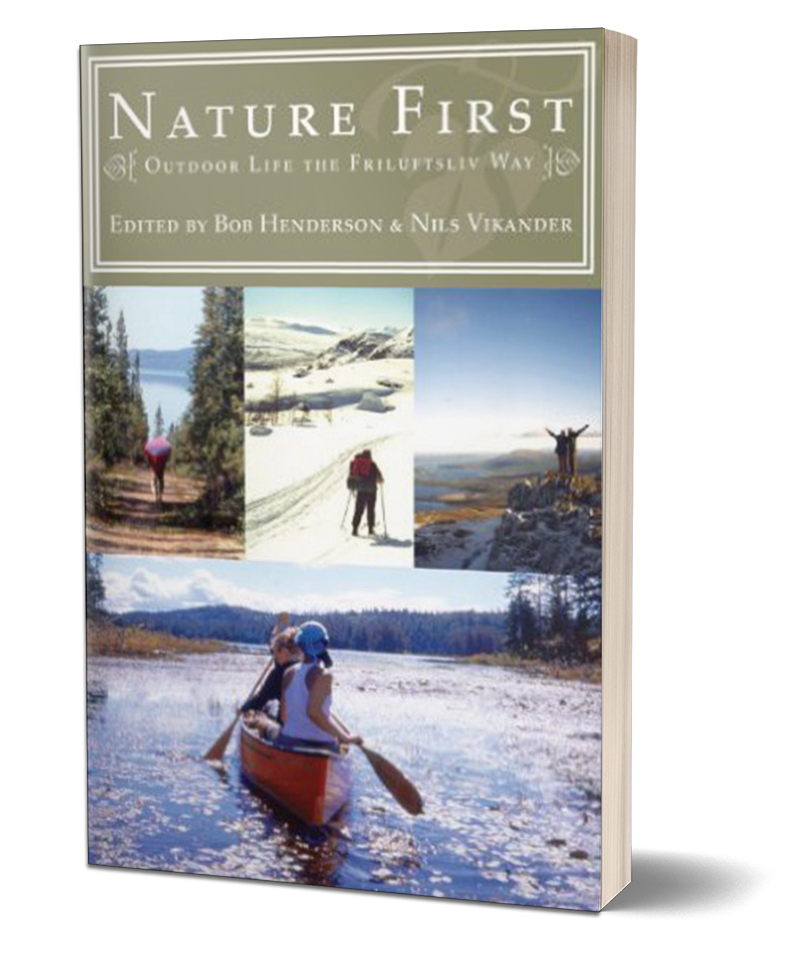
Nature First (2009)
Bob Henderson & Nils Vikander
Nature First combines the Scandinavian approach to creating a relationship with nature (known as friluftsliv) with efforts by Canadian and international educators to adapt this wisdom and apply it to everyday life experiences in the open air. The word friluftsliv literally refers to “free-air life” or outdoor life. A word saturated with values, the concept can permeate deeply and playfully into ones cultural being and personal psyche, thus influencing the way one perceives and interacts with nature on a daily basis.
For centuries, the North American approach has been one of domination and bringing nature under control, in many cases abusing our natural environment in the process. The friluftsliv way of being on “talking terms with nature,” developing an “insider’s” relationship with nature, offers the rich potential of allowing us as cohabiters on the Earth to recreate, rejuvenate and restore the balance among all living things.
Nature First is the first English-language anthology to bring together the perspectives and experiences of North American, Norwegian, Swedish and other international outdoor writers, all friluftsliv thinkers and doers. Here, the thirty contributors’ use of history, sociology, psychology, philosophy and outdoor education writings blend to provide an understanding of how friluftsliv applies to everyday life.
The book presents an alternative to much of the personal growth/adventure-based literature that tends to dominate our current approach to the outdoor activity. Folklore, heritage, adventure travel, crafts, place-based education and the daily outings of families all have a role to play in promoting an understanding of both the ordinary and the mystical importance of this Nordic tradition. Dedicated to parents, travel guides, educators and generally to participants in the outdoors, Nature First provides a compellingly fresh approach to life in the out-of-doors.
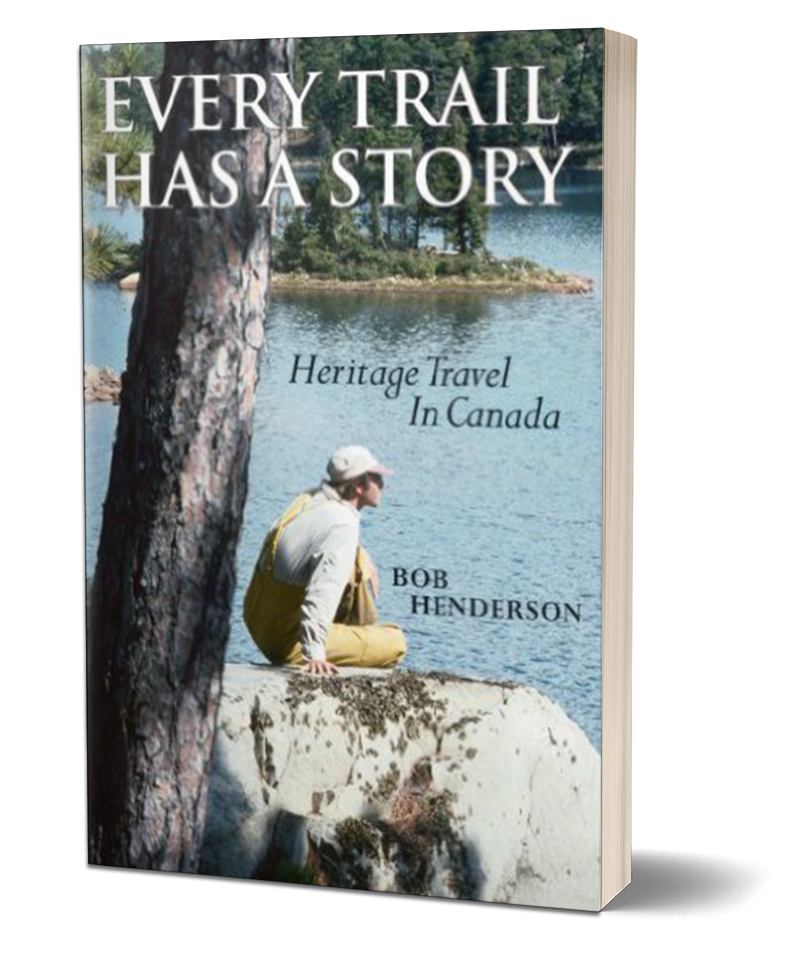
Every Trail has a Story (2005)
Canada is packed with intriguing places for travel where heritage and landscape interact to create stories that fire our imagination. Scattered across the land are incredible tales of human life over the centuries. From the Majorville rock formation (dated as being older than Stonehenge), through the systems of walking trails developed by pre-contact Native Peoples, and the fur trade routes, to the more recent grand stories of the Chilkoot Gold Rush of 1897, Bob Henderson, the traveller, captures our living history in its relationship to the land – best expressed through the Norwegian quote “nature is the true home of culture.”
The diversity of fascinating content includes the ancient James Bay landmark (the “Wonderful” Stone); the mountain treks of naturalist Mary Schaffer Warren; the west coast observations of George Vancouver; practices such as dog sledding, warm winter camping and canoeing that allow for heritage insights; the trails of Dundas, Ontario; the exploits of missionary Gabriel Sagard; the recluse Louis Gamache of Anticosti Island; the abandoned gravesites along the coast of Newfoundland – to name but a few.


